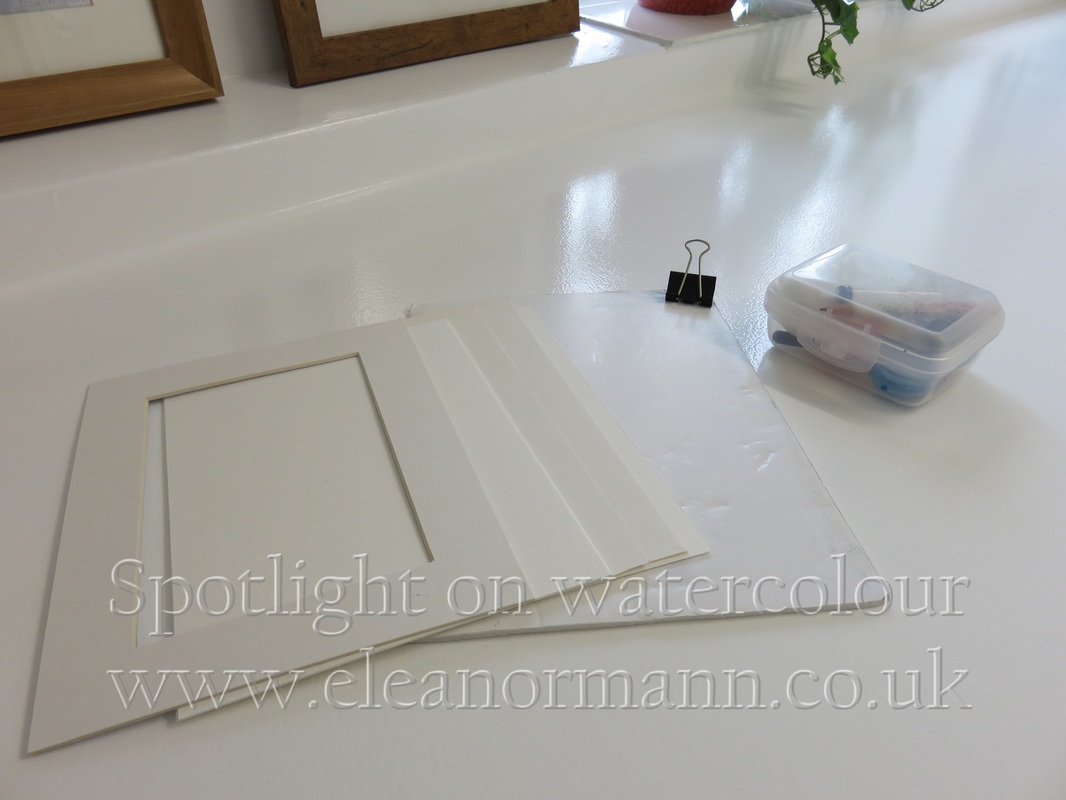Great Hickbush, Great Henny
However, I have used the kit once I have reached my destination, the painting above for example.
My kit contains:-
Paint and Palettes:- Two contact lens cases are filled with four colours of paint: Winsor Lemon, Winsor Blue (green shade) and Permanent Rose, three primary colours from which I can mix any colour I want, and Paynes Grey. Paynes Grey is not in my usual palette of paints but it is useful for tonal sketches. These, together with an empty 35mm film cartridge (used to contain clean water for mixes), fit into a clear plastic soap box. I use the soap box as a palette to mix large washes of paint. Smaller washes can be mixed in the lids of the contact lens cases, or in the soap box.
Brushes:- One tiny one, which fitted into the soap box, has recently been replaced by two others, one medium sized round and the other, a half inch flat, as I find painting even small studies more difficult with a small brush, however cute. They are all inexpensive synthetic brushes which are fine for the type of studies I want to do.
Paper:- I cut my usual paper, Bockingford 140lb NOT, into various sizes. I also include some cartridge paper for sketching or note taking. This is held together with a clip, which also serves to secure the paper to my light weight backing board (which I think it's called Coreflute or Corex).
Other items:- A tiny pencil (now replaced with a tiny propelling pencil to eliminate the need for a sharpener), a piece of putty rubber, syringe and several pieces of kitchen roll which all fit into the soap dish along with the paints.
I don't want to brag but the cost of all this is less than a fiver.
It is better to travel with as little equipment as possible, I think. However, you will want to be comfortable if you plan to stay in one place for a while. Below is a photograph of my easel which has been adapted from a camera tripod. It is lighter and more versatile than the wooden sketching easel I have in the shed and the shelf is a handy addition.
Painting outside forces you to work quickly, before the elements of nature wreak havoc with your drying wash, light conditions vary or you're eaten alive by insects. Having to work quickly means you learn valuable skills quickly. The resultant painting may not be perfect but will have a spontaneity that is hard to replicate in the studio, working from a photograph.
How often have you taken a photograph with the intention of painting from it; only later looking at it and wondering what is was that drew you to the subject in the first place? Cameras lie. They distorts perspective and flatten aerial perspective. They alter colours and tones and shadows appear black and lifeless.
Painting on location creates limitations and limitations breed creativity.
Painting from life sharpens your observational skills. Observation is a key element in any successful painting and one that requires constant practice.
Of course you don't have to venture far to find subject matter. Your back garden is an ideal place to start, providing you don't have geese, but that's a story for another time.
Eleanor





 RSS Feed
RSS Feed